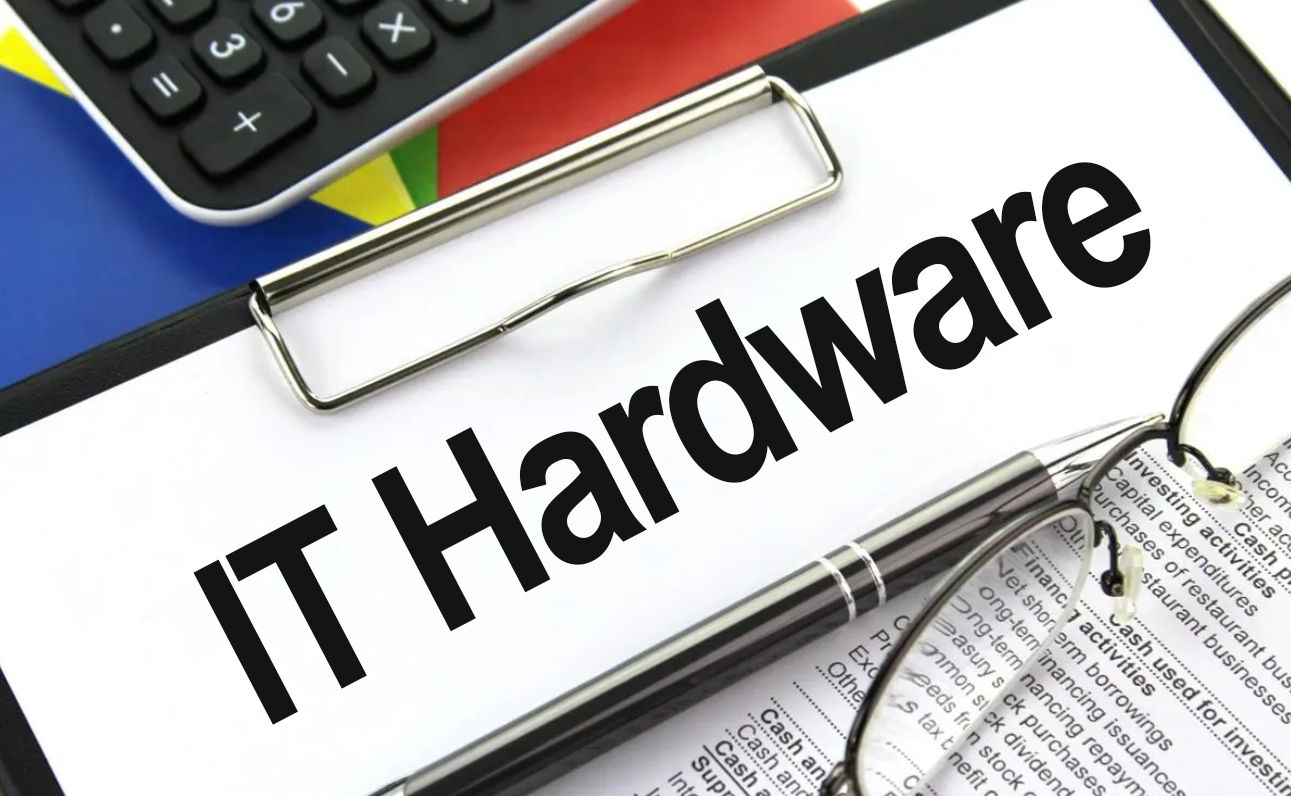
Technology marches on at a relentless pace, leaving even the most cutting-edge hardware feeling like a dusty relic a year or two down the line. For businesses, this constant churn can create a headache. So, how do you stay ahead of the curve? Introducing IT hardware leasing, a financing option gaining serious traction for its suite of advantages.
But with so many financing choices out there, is leasing really the right call? Well, absolutely! Let’s explore the top benefits of leasing IT hardware and see why it might be just the thing your company needs to thrive.
Why Leasing Your IT Hardware is a Business Boon
Benefit #1: Preserve Precious Capital
Forking over a hefty sum for a server upgrade or a fleet of new laptops can leave your business feeling financially deflated. This is where IT hardware leasing shines. Instead of depleting your working capital with a significant upfront purchase, leasing allows you to spread the cost of the equipment over a fixed term, typically 24–36 months. Think of it like a subscription for your tech. You get to use the latest equipment without putting a clamp on your cash flow.
This frees up valuable resources for other critical areas of your business. Need to boost brand awareness? Leasing helps you keep those coffers full. Dreaming of expanding your product line but worried about the financial burden? Leasing empowers you to make strategic investments without sacrificing your present needs.
Pro Tip: Many leasing companies offer flexible payment plans that can be tailored to your specific budget. Don’t be afraid to shop around and negotiate to find the best deal for your business.
Benefit #2: Tech Refresh on Autopilot
Remember that satisfaction when you unbox a brand new laptop? It’s a feeling that evaporates faster than anything in today’s ever-evolving tech landscape. Leasing IT hardware offers a solution to this constant game of catch-up — it lets you upgrade your equipment seamlessly at the end of the lease term.
Moreover, leasing companies often have established relationships with major tech manufacturers. This helps you avail latest and greatest equipment, ensuring your employees have the tools they need to stay productive and competitive. Imagine your design team working with the newest graphics cards or your sales team closing deals on top-of-the-line tablets. Leasing keeps your team equipped with the best tech, boosting innovation and propelling your business forward.
Pro Tip: Discuss upgrade options with your leasing provider beforehand. Some offer seamless transitions to the latest equipment, while others might require a negotiation. It’s all about planning for a smooth tech refresh cycle.

Photo by Domenico Loia on Unsplash
Benefit #3: Simplify Financial Forecasting
Financial forecasting is a juggling act. Keeping track of IT expenses can feel tiresome, not fancy, right? With traditional hardware purchases, depreciation schedules and residual values add another layer of complexity to the budgeting equation.
Leasing IT hardware offers a dose of simplicity. Since lease payments are fixed and predictable, incorporating them into your financial forecasts becomes a breeze. No more worrying about fluctuating depreciation values or surprise repair costs. This newfound clarity allows you to confidently plan for future investments. Thus helps you make an informed decision about your company’s tech roadmap.
Pro Tip: Don’t forget to factor in potential software licensing fees associated with the leased equipment when creating your IT budget. A comprehensive financial picture ensures you’re making sound business decisions when it comes to your technology needs.
Benefit #4: No More Disposal Dilemma
Disposing outdated IT equipment can feel troublesome. E-waste regulations are becoming increasingly stringent, and the thought of navigating them can cause a cold sweat. In such scenarios, leasing IT hardware takes the hassle out of this equation. Many leasing companies offer end-of-lease buyouts or responsible recycling programs. This means you can simply return the equipment at the end of the term. Safe in the knowledge that it will be disposed of responsibly and securely. No more wrestling with bulky monitors or wondering if your local recycling center even accepts old hard drives. Leasing lets you focus on what you do best — running your business — while leaving the tech disposal to the experts.
Many leasing companies prioritize responsible recycling practices. At the end of the lease term, the equipment is refurbished, reused, or dismantled and recycled according to strict environmental regulations. This eco-friendly approach allows you to reduce your company’s e-waste footprint and contribute to a greener future.
Pro Tip: Be sure to inquire about the specific end-of-lease options offered by your leasing provider before signing on the dotted line. Knowing your disposal options beforehand gives you peace of mind and ensures a smooth transition when it’s time to upgrade.

Photo by rivage on Unsplash
Benefit #5: Free Up Your IT Team
Managing a company’s IT infrastructure can be a time-consuming and thankless job. Your IT team is likely juggling a never-ending list of tasks, from troubleshooting software glitches to ensuring network security. Leasing IT hardware can free them up from the administrative burden of equipment procurement and maintenance. Leasing empowers your IT team to become true business partners, driving growth and innovation within your organization.
Pro Tip: Understanding the scope of coverage in your lease to ensure that your IT team has the support they need to keep your business running.
Benefit #6: Potential Tax Breaks
Let’s face it, tax season is one of hardest phases of running a business. But leasing IT hardware might just score some sweet tax deductions. In many countries, lease payments are considered operating expenses. This means you can deduct them from your taxable income. This translates to a potential tax advantage compared to purchasing equipment outright, where depreciation deductions are spread out over a longer period.
Pro Tip: It’s always wise to consult with a qualified tax advisor to understand the specific tax implications of leasing IT hardware in your region. Remember, tax laws can be complex, and a professional can help you navigate the intricacies and maximize your potential deductions.

Photo by Markus Winkler on Unsplash
Benefit #7: Adapt Easily
Predicting future is a tricky business, especially when it comes to your company’s tech needs. Will you need to onboard a surge of new employees in the next quarter? Is your software development team clamoring for more powerful workstations? Leasing IT hardware offers a safety net for businesses with evolving technology requirements.
Unlike traditional purchases that lock you into specific equipment for years. Leasing allows you to scale your IT infrastructure up or down with ease. Need to add a few extra laptops to accommodate your growing sales team? No problem! Most leasing companies offer flexible options to add or remove equipment as your business needs dictate. This agility ensures you’re never stuck with outdated hardware or burdened by underutilized equipment gathering dust in a corner.
Pro Tip: Discuss upgrade and downgrade options with your leasing provider beforehand. Some might offer seamless transitions within their existing equipment pool. While others might require negotiation. The key is to find a leasing partner who can adapt to your company’s dynamic growth.
Frequently Asked Questions or FAQs
Q: What types of IT hardware can be leased?
Pretty much any type of IT hardware can be leased, including:
- Desktops and laptops
- Servers and workstations
- Networking equipment
- Software licenses
- Printers and scanners
- Mobile devices (phones and tablets)
Q: How long do lease terms typically last?
Lease terms can vary depending on the leasing company and the type of equipment being leased. Typical lease terms range from 12 to 36 months, but some companies offer longer or shorter terms to accommodate specific business needs.
Q: What happens to the equipment at the end of the lease term?
There are typically three options at the end of a lease term:
- Return the equipment: The most common option is to simply return the equipment to the leasing company.
- Purchase the equipment: In some cases, you may have the option to purchase the equipment at a fair market value.
- Upgrade the equipment: Many leasing companies offer seamless upgrade options, allowing you to transition to the latest hardware models at the end of your lease.
Q: Is leasing IT hardware right for my business?
Leasing can be a great option for businesses of all sizes, especially those that:
- Want to avoid a large upfront cost
- Need access to the latest technology
- Don’t have the resources for in-house IT maintenance
- Are looking for a way to improve cash flow
- Want to scale their IT infrastructure up or down easily
Conclusion
The verdict is in: leasing IT hardware offers a compelling suite of benefits for businesses of all sizes. From preserving precious capital to staying ahead of the innovation curve, leasing empowers you to maximize your tech ROI and propel your business forward. No more worrying over hefty upfront costs or agonizing with outdated equipment. Leasing simplifies your budgeting, minimizes risk, and frees up your IT team to focus on strategic initiatives.
Ready to take the next step? At Rent Assist, our team of experts is here to answer your questions and help you craft a customized leasing solution that aligns perfectly with your unique tech needs. Book a free consultation today and discover how leasing can be the game-changer your business has been waiting for!



Hi, this is a comment.
To get started with moderating, editing, and deleting comments, please visit the Comments screen in the dashboard.
Commenter avatars come from Gravatar.